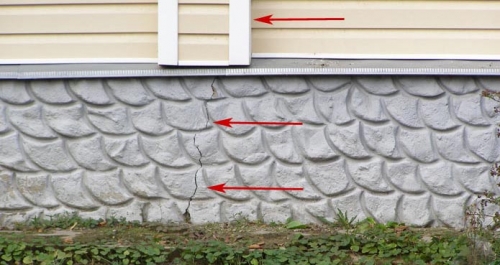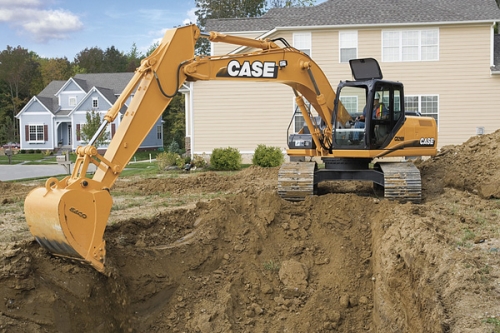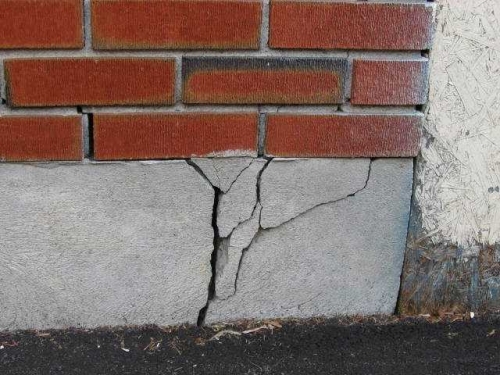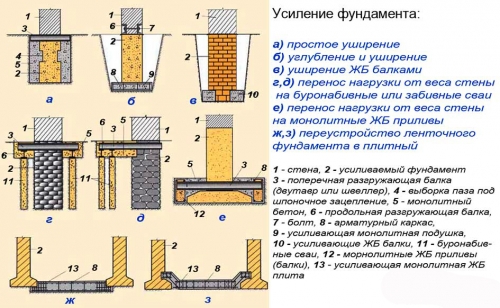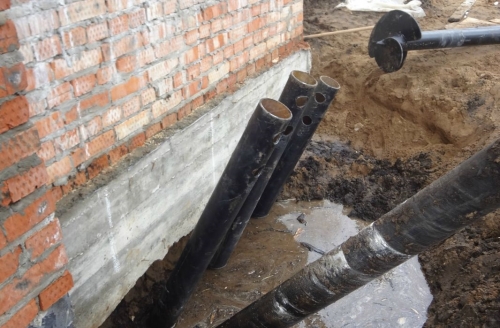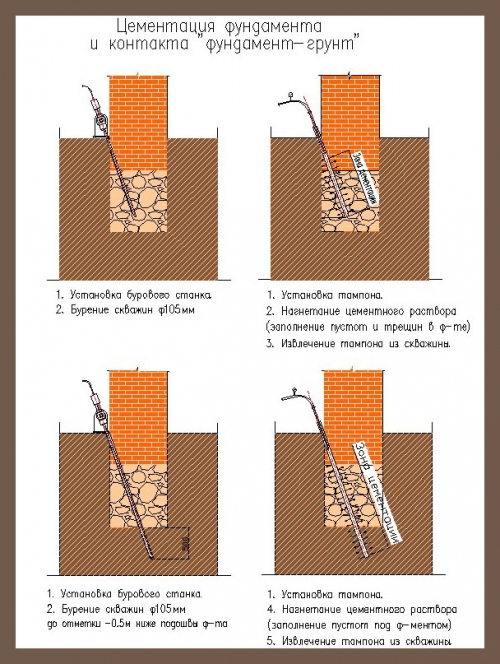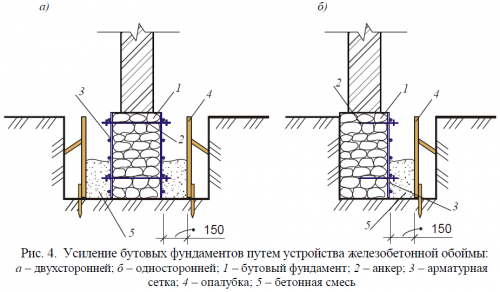When building a new house or the device of an old, an important part of the repair work ...
|
|
The most standard finish of the surface of the fireplace or furnace is brick. But not... |
Until recently, reinforcement from metal rods was considered not only the most ... |
Enforcement of the foundation: step -by -step instructions

Very often, the desire to increase the living space of the house is nullified due to insufficient strength of the foundation. Indeed, it is impossible to significantly increase the weight of the construction without changes at its base, because the previous foundation can burst or comfort. All this, in turn, provokes the appearance of cracks on the walls of the house, and, of course, the complete destruction of the building. Also often in old, and new houses, microcracks appear in the walls. The article will talk about the methods of strengthening the foundations.
Content:
- Setting the cause of partial destruction of the base
- Examination of the strengthened foundation
- Foundation unloading
- Ways to strengthen foundations
- Strengthening the foundation with piles
- The technology for strengthening the foundation with a reinforced concrete shirt
- Strengthening the foundation of the house cementation
- Strengthening the foundation by bruising of the sole
- Strengthening the foundation using castings
- Strengthening the base using clips
- Strengthening the foundation with torque concrete
- Tape foundation strengthening technology
Before starting work on strengthening the foundation and foundation, you should conduct a close analysis of the current state of the house, evaluate its capabilities, and only then engage in work to strengthen it. Usually, professional workers with special equipment are invited for this or ignore the problem, but you can do work yourself. Strengthening the foundation avoids its complete replacement, and after all, it usually pours out the owners of the house in a tidy sum. In order to qualitatively carry out all types of work, you should evaluate the factors affecting the deformation of the foundation of the house, and minimize them or completely eliminate them.
Setting the cause of partial destruction of the base
Initially, the incorrect design of the foundation may be an erroneous calculation of the future load on it.
- Non -compliance with technology during the installation of the foundation.
- Savings on building materials, the use of cement and other low -quality materials.
- Incorrect operation of the construction (for example, the lack of heating in the winter).
- Poor -quality waterproofing.
- Inclined terrain.
- Significant changes in the important indicators of the soil that have occurred from the moment of construction of the house. This is usually affected by the increased groundwater level, the oversaturation of soil with water, and soil swelling.
- Large -scale excavation work carried out near the foundation (nearest construction, laying of communications).
- An increased load on the base of the house due to reconstructions or redevelopments.
- Internal or external vibration (proximity to the railway, earthquakes, etc.).
- Flood or floods that caused sharp moisturizing the soil.
- Freezing of the soil.
Changes in the level of groundwater due to flood, prolonged rains can cause fusion. Because of this, the house seems to be squeezed out of the ground, which leads to a bias of the building. In this case, the installation of the drainage system and waterproofing the base justify itself before strengthening the foundation, if they were not laid during construction. The land plot should also be carefully examined to identify various types of soil under the building. Depending on the result, a decision is made to properly strengthen the base with your own hands.
Examination of the strengthened foundation
- External inspection will analyze the size of the construction, the current condition of the load -bearing walls. It is also important to determine the load on the foundation, detect all the cracks and bevels that indicate problems with the base.
- Underground inspection I must determine the design and dimensions of the foundation, which was used when laying the material, characteristics, strength, as well as the depth of the occurrence.
There are also situations that require strengthening the base even in good condition:
- increased load on the foundation (a case regarding the expansion or erection of new floors);
- caportering of a house within the above permissible norms;
- the appearance of any vibrations near the construction (this applies to any construction work near the house).
Before proceeding to strengthen the reinforced concrete base, it should be established whether its shrinkage has ended. This is a fairly long process that requires a month of observation. For this, gypsum beacons are installed across the detected cracks, if after a month there are no flaws on them, then you can safely start strengthening.
Foundation unloading
The final stage of preparation is the unloading of the base, which is both partial and complete. This is an important stage that does not allow distortions during strengthening work.
- You can partially unload the building using supports and struts that come from both wood and metal. To begin with, the basements are put in the basement at a distance from the wall of two meters, they put a support beam on them and racks are fixed, which then must be connected with a beam with an overlap and wedges with a supporting beam.

- To completely unload the base, you will need to install metal beams. Under the teapor row, the walls of the walls break wells on both sides, in which it is necessary to place and fasten with bolts (20-25 mm) every two meters of beams-bonds. The points where the beams are connected are required to cook overlays, and fill the distance from the wall to the beam with a solution of sand and cement. From below the walls, punch wells with a remoteness of two to three meters from each other, into which the beams are inserted. Put the transverse beams on the supporting pillows on both sides of the wall.
Ways to strengthen foundations
There are various methods of strengthening the base:
- piles;
- reinforced concrete shirt;
- cementation;
- an increase in the sole;
- castings;
- summing up new grounds;
- clips;
- thorcretic concrete.
Structures of enhancement of foundations
Strengthening the foundation with piles
- Microsa with a diameter of 150-300 mm Very convenient to use due to the ability to combine drilling with the injecting of the solution into the wells. In this method, you can use drilling rods that remain inside the piles and provide a more reliable amplification.
- Buronabish piles The wells are installed using the entire length of the foundation both outside and inside the building with drilling equipment. The wells need to be made every one and a half meters with a depth of about 2 m. In them it is necessary to insert the reinforcement pin and pour it with concrete solution, after which the structure should be attached to the foundation with anchors.
- Pressed piles Use, if it is necessary to transfer the load on deep -dressing hard soils, special equipment is used for this. For good incapation of the base and piles, beams are installed at the base.
- With an increased level of groundwater, they use remote piles, on which they take the base, passing the reinforced concrete beam through it, it is a kind of link.
- Metal tubular piles The bases of the foundation of sections with special equipment are crushed at once on both sides. For the same purposes, it is necessary to install a frame of reinforced concrete, associated with beams, which, in turn, the jacks serve as a support.
The technology for strengthening the foundation with a reinforced concrete shirt
- The method is convenient to execute, because one person can easily do all the work. To do this, we need a reinforcement for strapping the frame (16-18 mm) and concrete of the M400 brand.
- They start with the digging of the foundation in such a way that each bookmark is not more than three meters in length. First you should dig and strengthen the corners. The depth of the digger should be larger than the depth of the foundation for 50 cm.
- Then arrange a reinforcing cage, which seems to fit the underground part of the building on the outside. The maximum load of the frame increases with an attachment to the existing foundation with anchors. Place the rods of the army belt vertically and horizontal, intersecting points to tie with wire.
- Then carry out installation of a removable formwork with supports and pour the solution. That is how the reinforced concrete clip is done, with which it is possible to qualitatively strengthen the strip and columnar bases.
Strengthening the foundation of the house cementation
- Cementation, or injection, differs in that gay tubes are placed in the foundation cavity. Typically, this method is used for a missile base, in which there are many voids. The availability of the method is achieved due to the fact that the cavities between bricks and Bout are filled with solution, and small cracks are covered.
- Hall tubes are placed in such a way that they go beyond the clip of more than 40 cm, and certainly fixed with the solution. To fill the cavity of the tubes, they fill cement, less thick than for a clip. The work should take place in a certain sequence: first it is necessary to make a clip, after two days, when it freezes, fill out previously installed tubes.
Cementation, like another method - transfer, is allowed only if the foundation has retained its bearing capacity.
Strengthening the foundation by bruising of the sole
This method is quite complicated in execution on their own, but several people can cope.
- The sole is a pillow made of reinforced concrete, which serves as a support for the base. First of all, you should mark the foundation every 2.5-3 meters, make soil excavations on the sides of the foundation and under it.
- Put the reinforcing screed under the base and fill it with a solution, which you need to try to distribute as homogeneous as possible and get rid of air bubbles. For this, a concrete vibrator is useful. The side walls of the sole must be raised to the base at a distance of 15 centimeters.
Strengthening the foundation using castings
- This method of amplification is relevant for the foundation of brick or Buta.
- Reinforced concrete tints are used in return for the reinforcing cage. They should be installed on both sides and squeezed so that their top does not touch the wall, and the lower part is the other way around.
- Then fix the structure with jacks and screed, dig up the trenches up to two meters.
- Fill the distance between the wall and tide with a solution.
Strengthening the base using clips
- Strengthening can be carried out by reinforced concrete clips (it is allowed to use bilateral or use tubes that pump the solution). This method allows you to strengthen the foundation throughout the thickness, since the solution easily reaches all the voids of the masonry.
- Initially, a section of the existing base is dug up to three meters in length. It should delve into half a meter, and its width should be equal to one meter.
- On both sides, drill through the holes through, placing them like chess. In them, put the rods of reinforcing bars (14-20 millimeters), to which a frame with cells of 150 by 150 millimeters is attached. Then install the formwork and pour the formed space with concrete.
Strengthening the foundation with torque concrete
- This method is better to entrust professionals, as it requires the use of a concrete gun. Around the base, you need to dig a one and a half meter trench, clean the masonry and apply additional notches.
- Dimmed and cleaned parts under pressure are covered with a solution with a gun. This will completely fill all the cracks.
- This strengthening method should be chosen when the foundation is not very deformed or before the construction of new floors of the house in order to reduce the load on the base.
Tape foundation strengthening technology
- The trench is dug around the entire perimeter of the base. The width must be made so that all work is carried out in comfortable conditions and taking into account the increase in the thickness of the foundation.
- Clean the surface of contaminants.
- Install the reinforcement.
- Form a reinforced belt. This can be done by welding the reinforcement in some places, as well as tied with wire.
- Put the formwork.
- Pour concrete.
- Make waterproofing.

